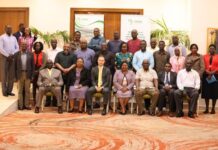The Diverfarming project scientifically proves, through algorithms and bioinformatic approaches, the environmental and agronomic effectiveness of applying compost rather than traditional fertilisers in soils
Sustainable agriculture has been gaining terrain in recent decades. This growing system integrates practices that have long-term benefits for the land: it joins together food production and the conservation of environmental and natural resources. Crop rotations, intercropping and the use of sustainable farming practices such as reduced tillage or using organic fertilisers are common practices in this type of agriculture.
Within the Diverfarming project, a change of paradigm is sought in European agriculture which moves towards agriculture that is more sustainable environmentally and economically and which looks after the planet, using the tools of sustainable agriculture. On this path, the agronomic, environmental, and socio-economic effects of the different crop diversifications and different agricultural practices are assessed. Taking into account that the soil microorganisms maintain the soil’s health and are crucial for the production of crops in agricultural systems, the Diverfarming project team has centred one of its studies on analysing the effects of sustainable practices such as the use of compost on the soil microbial community, responsible for the degradation of contaminants and for soil fertility, among other things.
A research team comprising staff from CEBAS – CSIC and Universidad Politécnica de Cartagena has analysed and compared the interactions of the different soil microbe communities in three different growing systems: conventional, an organic system with an annual addition of compost, and an organic system with an annual edition of sheep manure. To study the changes that occurred in those bacterial communities, DNA fragments (known as amplicons) of gen16S rRNA were sequenced and then bioinformatic analyses such as the networks of co-occurrence were used. These enable to know and study the interactions between the microorganisms present in the soil, being able to assess the relationships that exist between them (mutualism, competition, or predation). Moreover, algorithms were used to predict the functionality which enables to study, by means of phylogeny, the potential function that these microorganisms may have in the soil.
All these approaches revealed that the long-term application of compost modified the bacterial community, increasing the complexity of the network and improving bacterial communication. In the case of organic farming practices with the addition of compost, a higher potential was detected for nitrogen fixing, lower emissions of N2O, and a higher potential for carbon sequestration than the other growing systems. This shows the importance of using a stable organic amendment such as compost and the use of appropriate tools to study the long-term response of the bacterial community to growing systems.
The application of compost amendments therefore has significant benefits for the grower and for the environment in the long term, since their prolonged application can reduce fertiliser and pesticide use and could create a more stable soil, which would be able to resist the effects of climate change.









